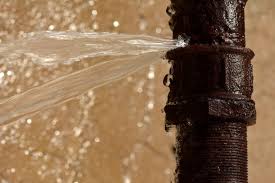Water Leak- Prevention and Detection
Date
Friday, April 12, 2019
Date
Friday, April 12, 2019
 In last week’s blog, we discussed an attic water leak and the water damage that ensued in a Fort Pierce, Florida home. After the water leak was detected and repaired, the homeowner employed Joe Taylor Restoration to address the water damage. We did our job well, and his home was completely restored.
In last week’s blog, we discussed an attic water leak and the water damage that ensued in a Fort Pierce, Florida home. After the water leak was detected and repaired, the homeowner employed Joe Taylor Restoration to address the water damage. We did our job well, and his home was completely restored.
Water damage restoration was a very important part of this story. However, if the water leak had not been addressed, a second water loss would have been imminent. Leak detection is a must when it comes to water damage, and leak prevention can help make sure water damage never even occurs in the first place.
With that in mind, the following are some ways a water leak can be prevented or detected in your roof or attic:
The first step in dealing with leaks is determining where they occur. Discovering the source of a water leak can be difficult, particularly if insulation obscures the source. Trace the leak back to the source by looking for stains and remembering that water always travels downhill.
Water leaks commonly occur near features that penetrate the roof sheathing. These include chimneys, plumbing vents, attic vents, holes for cable installation, wires, ducting for ventilation systems and the like.
Methods for repairing water leaks depend on where and what is causing the leak. A water leak can occur through roof failure, water condensation build-up inside an attic, or plumbing issues.
Rainy weather causes the first type of leak to be discovered. At the very least, shingles must be changed, or if the roof is old enough, the entire roof structure will need replacement.
Attic condensation is due to humid air leaking or vented into the attic. Vent humid air from kitchens and bathrooms to the outside instead of the attic to avoid this problem.
Faulty pipes leaking in the attic can cause not only water damage, but mold damage as well. Periodically check that pipes are functioning correctly and do not need to be repaired or replaced. If new pipes are necessary, PEX pipe is ideal in this environment. PEX allows for long runs, which reduce the need for tees, elbows and other fittings where leaks may occur. It also expands and contracts with temperature changes and is resistant to sweating in warm, humid weather.
Visual inspection can go a long way for heading off roof and attic leaks. Scan your roof monthly for deteriorating shingles and missing or broken flashing. Regularly check your attic to make sure it is dry and pipes are intact.
https://homeguides.sfgate.com/home-improvement/
If you find yourself faced with water or mold damage as a result of a water leak in your attic or roof, contact Joe Taylor Restoration immediately. We will see to it that your home is restored to its original condition.

